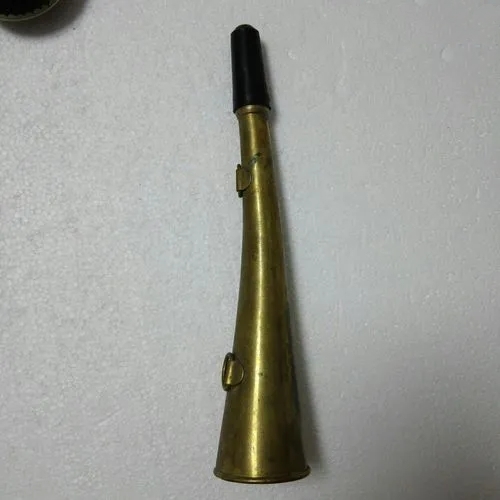Tongjiao overview

Tongjiao (pinyin: Tongjiao) is one of the "horns" of musical instruments. The whole body is made of thin copper sheets imitating ox horns. It is a folk musical instrument commonly used by people of all ethnic groups in northern and northwestern China. The shape is divided into two categories: one imitates horns, the body is curved; the other is straight, with a long cone shape. The ancient court was used for ceremonies and music.
Its origin is closely related to the primitive hunting activities such as witchcraft. In prehistory and the Xia and Shang dynasties, both ox horns and pottery horns were used as signal devices. It was originally made of cattle and sheep horns, and pottery horns appeared in the Neolithic Age. Later, they were further changed to bamboo, wood, leather, copper, etc. to make curved horns. The horns flowed into the Central Plains around the Han Dynasty, and were widely used in advocacy music. Later generations were used in military and lubo (ceremony) music. Its shape was a curved angle in the Han and Wei Dynasties. The horns played in the pictures of the existing Han drum music are very large and are already artificial horns.- type:lip vibration instrument
- nickname:Bronze, blowing gold
overview of other similar instruments
- sanyanxiao overview
- Daguangxian overview
- Leiqin overview
- hahao overview
- yandundagu overview
- Han Xiaozheng overview
- Fang Xiang overview
- guanzi overview
- zhuqin (Dao Qin) overview
- zhuiqin overview
- bangzi overview
- three-stringed piano overview
- Gehu overview
- xiao overview
- xiaokonghou overview
- Konghou overview
- Sheng overview
- suona overview
- hulusi overview
- gushao overview
 渝公网安备 50010702504639号
渝公网安备 50010702504639号